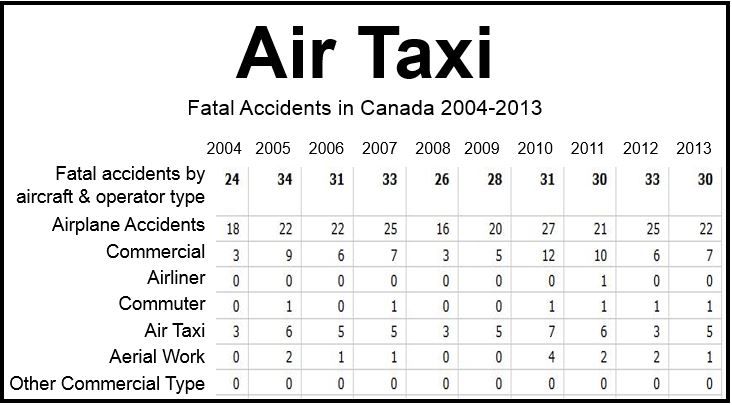Sixty-five percent of all commercial flight fatalities over the past ten years have occurred in the air-taxi sector, says the Federal Transportation Safety Board (TSB), which will carry out an investigation.
During the past ten years, a disproportionately high number of people have died in the air-taxi sector, TSB says.
TSB defines an air taxi operation as “single and multi-engine aircraft (other than turbo-jet) that have a maximum certificated take-off weight of 19,000 pounds or less, and a seating configuration, excluding pilot seats, of nine or less.”
In a speech on Wednesday at the Air Transport Association of Canada, Kathy Fox, Chair of the TSB, said an in-depth Safety Issues Investigation (SSI) will be conducted into the risks that prevail in Canadian air taxi operations.
The TSB plans to start the study next year.
“The air taxi sector of the aviation industry has seen 175 deaths over the last 10 years—65% of all commercial aviation fatalities—and we need to determine why. We’ll be analyzing historical data and case studies of selected accidents in Canada as well as occurrences from other nations.”
“We’ll also be engaging industry, the regulator and other stakeholders in the coming months to gain a full understanding of the issues affecting air taxi operations.”
Source: Transport Safety Board of Canada.
TSB says that over the past decade it has repeatedly drawn attention to serious safety problems that contribute to accidents. Among the inadequacies it lists are deficiencies in operational control, especially in self-dispatch operations, pilot decision-making, poor risk analysis operations, and crew adaptations from standard operating procedures.
An SII, also known as a Class 4 investigation, is “broad in scope and involves looking at multiple occurrences in order to identify the underlying safety issues, and the Board may make recommendations to address any identified systemic deficiencies.”
As soon as the investigation is completed, TSB says it will communicate its findings.

